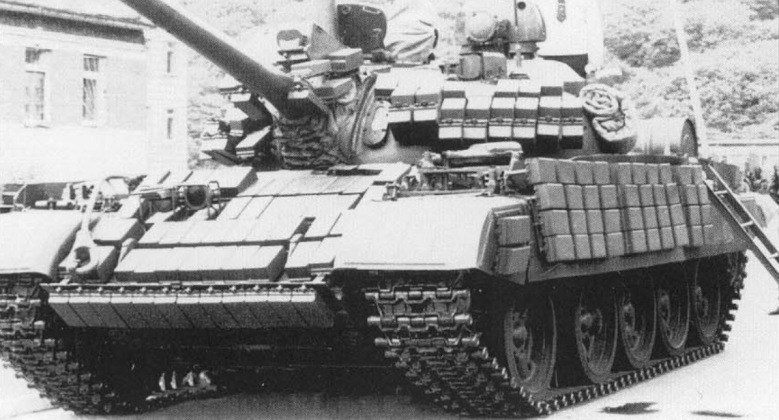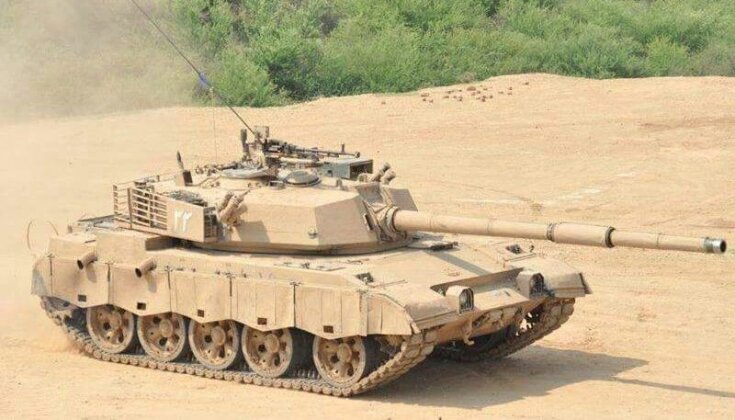News
Russia is Pulling 1940s T-54/55 Tanks Out Of Storage: How Viable Could They Be in Combat in Ukraine?
Footage of a convoy of Russian T-54 and T-55 tanks being transported from the country’s Far Eastern Primorksy Krai region by rail has raised widespread speculation that the vehicles are set to be deployed to the Ukrainian front, with the region hosting the 1295th Central Tank Reserve and Storage Base where large numbers of Soviet era armoured vehicles are kept. This would follow the withdrawal of T-62 tanks from reserve storage and major deployments of the class to Ukraine, alongside large numbers of more modern stored T-72s and reportedly reserve T-80s and T-90s as well. Where the T-62 first entered service in 1961, the T-54/55 is considerably older having first been deployed in 1948, two years before the Korean War. When entering service the vehicle was well over a decade ahead of all overseas tank designs, and when the first T-54/55 was obtained by Western experts in 1956 for examination it was found to be not only 10 tons lighter than the top tank in NATO service the American M48A2, but also much better armed and armoured. This advantage was strengthened five years later as the first T-62s were introduced. By the 1980s, however, the T-54/55 was considered obsolete for armour-on-armour engagements due in part to its lack of a smoothbore gun, which the T-62 had been the first in the world to pioneer, with armour protection and sensors having also fallen far behind modern standards.

The T-54/55 is the most produced tank in history with over 100,000 having been built, and enhanced derivatives remaining in production today in China for export to Iraq and previously to Pakistan. The latest derivatives the Al Kafil-1 and Al Zarrar boast smoothbore guns and modern fire controls and armour protection, with the latter also using a much larger 125mm gun. This makes them more capable than the majority of tank classes in frontline Russian service today – including many of its T-72 and T-80 models. Although the T-55 design does have significant potential to integrate upgrades, however, those built during the 1950s and 1960s in the USSR remain more limited due to their age and obsolete base armour. The most ambitious upgrade package for the design implemented in Russia was the T-55MV-1 which was developed in the 1980s for the Soviet Naval Infantry and included integration of Kontakt-1 explosive reactive armour, access to new guided rounds, and integration of new engines and fire controls.

Should T-54/55 tanks be intended for deployment to Ukraine they could receive upgrades under a package modelled on those developed for the Naval Infantry in the 1980s, but likely also benefitting from integrating of thermal sights as well as a much needed boost to situational awareness. Should the tanks gain access to fragmentation projectiles, which are deployed by T-62s and newer vehicles, they could potentially significantly contribute to infantry support operations which has been the primary role of tanks on all sides in the Russian-Ukrainian War. Western tanks notably lack access to such projectiles, meaning they may be more valued by the Ukrainian Army primarily for anti armour missions.
The T-55 is notably currently deployed by the Ukrainian Army, which received the enhanced M-55 variant from Slovenia which was heavily compensated by German equipment transfers. Ukraine is also set to receive over 100 similarly obsolete German Leopard 1 tanks which similarly lack smoothbore guns. For the T-55s on both sides, as well as the Leopards, a major issue remains their lower gun calibers than all other tanks operating in their militaries which seriously limits the availability of ammunition. Whether Russia has significant quantities of 100mm ammunition for the T-54/55 remains in question, although Syria, Iran and North Korea are all major operators of tanks from the same class and could potentially provide from their own stockpiles – with North Korea able to manufacture further rounds of that calibre independently. It has also been speculated that the tanks could receive new main guns, perhaps even 125mm guns to be able to use munitions from the T-72/80/90, which has been done in the past for T-55 variants and derivatives including the Sino-Pakistani Al Zarrar, Sino-Bangladeshi Type 59 Durjoy, and the Chinese VT-3. Major Russian investment in upgrades nevertheless remains unlikely.

The T-54/55 remains the most widely used tank in the world despite having long since been retired from Russian service, with the class having seen significant action the last decade in Syrian counterinsurgency efforts where models received North Korean upgrades including laser rangefinders, while seeing major sales made by Serbia to Pakistan to equip its units on the Afghan border. Bringing T-54/55s into frontline service in the Russian Army would nevertheless be a highly unusual decision, with Russia having several potentially more promising options including purchasing T-72s from states such as Iran, or T-62s and their many enhanced derivatives produced on a significant scale in North Korea. Other explanations offered for the appearance of the vehicles includes their intended use for training in newly mobilised units, or perhaps even provision to Syria as aid in exchange for its T-62Ms or T-72s. The T-54/55 is prized for its very low logistics footprint and great ease of maintenance, even when compared to the T-62 let alone the more modern T-72 and T-90, which could allow the Russian Military and its affiliates to field a much larger armoured force of relying on the vehicles. Russia is reportedly set to produce 1500 of its most modern operational tank the T-90M this year, which although just a fraction of Soviet era production numbers indicates that armoured units are being expanded significantly. Whether the T-54/55 will have a place in this, and if so in what capacity, remains highly uncertain.












